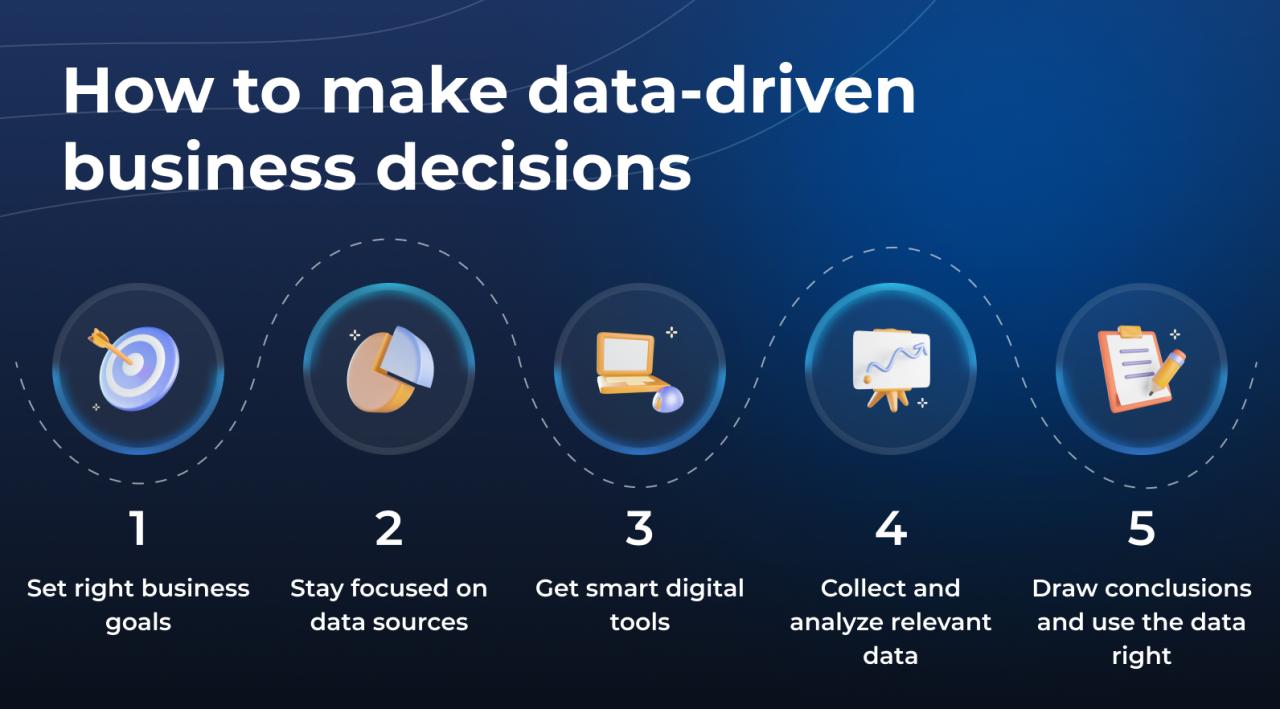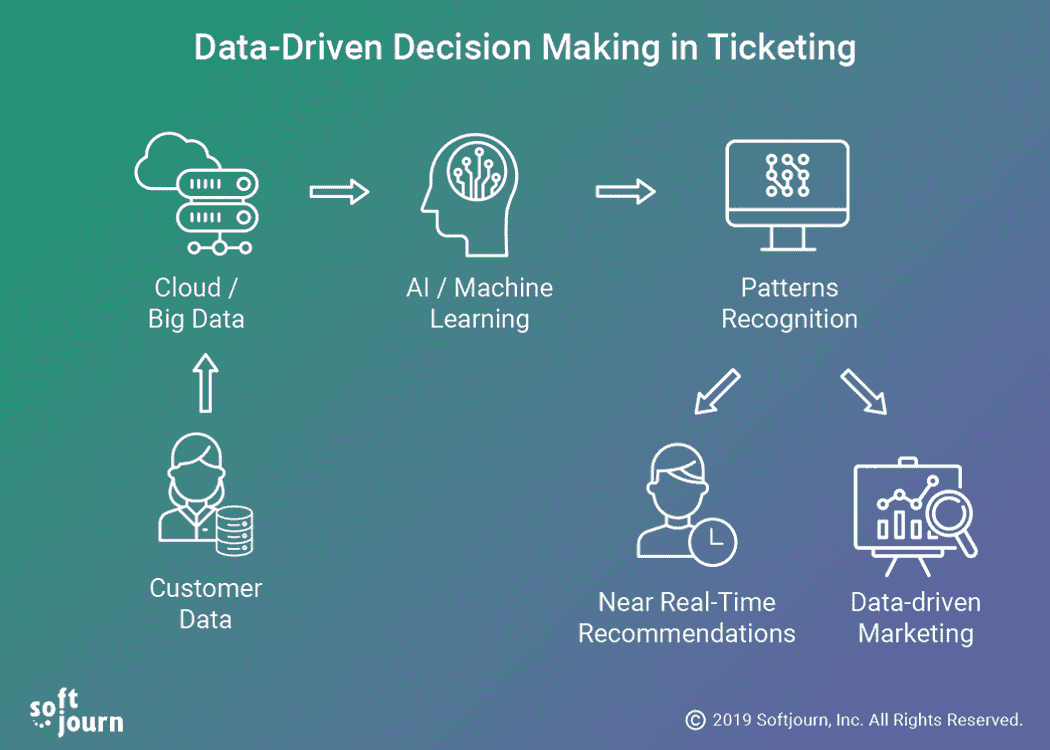Data-Driven Decision Making is revolutionizing how modern businesses operate, enabling organizations to make informed choices backed by empirical evidence. In an age where data is abundant, the ability to harness this resource is paramount for success. Companies that adopt data-driven strategies not only enhance their operational efficiency but also gain a competitive edge by making decisions that are more aligned with market realities.
From analyzing consumer behavior to optimizing supply chains, data-driven decision-making plays a crucial role in various aspects of business performance. Leading companies across industries, such as Amazon and Netflix, have showcased the power of data-driven insights, demonstrating how analytics can guide strategic initiatives and drive growth.
Importance of Data-Driven Decision Making

In the fast-evolving landscape of modern business, the importance of data-driven decision-making cannot be overstated. Organizations that harness the power of data to inform their strategies are not only able to stay competitive but also excel in operational efficiency and innovation. By utilizing data as a core part of their decision-making process, companies can make informed choices that lead to better outcomes.Data-driven decision-making enhances organizational efficiency by enabling businesses to identify trends, measure performance, and understand customer behavior.
Encountering issues with your analytics can be frustrating, but knowing how to address them is essential. Resources like How To Troubleshoot Issues In Sas Business Intelligence Software? guide users through common problems, providing step-by-step solutions that ensure your BI software runs smoothly, thus maintaining the integrity of your data analysis.
This approach allows companies to optimize their resources, reduce costs, and increase profitability through informed strategic initiatives. With the right data analytics tools, organizations can transform vast amounts of data into actionable insights, facilitating quicker and more effective decision-making.
When it comes to data analysis, utilizing Sas Business Intelligence Tools For Real-Time Data Analysis. provides organizations with the capability to make informed decisions swiftly. These tools not only enhance data visualization but also streamline the analytics process, allowing businesses to respond promptly to ever-changing market conditions.
Examples of Companies Implementing Data-Driven Decisions
Several leading companies have successfully integrated data-driven decision-making into their operations, showcasing the tangible benefits of this approach. The following examples illustrate how data can significantly influence business strategies:
- Amazon: Utilizing predictive analytics, Amazon tailors its recommendations to individual customers, resulting in increased sales and customer satisfaction. Their data-driven approach has been fundamental in creating a personalized shopping experience that keeps customers coming back.
- Netflix: By analyzing viewer behavior and preferences, Netflix has been able to produce and recommend content that aligns closely with audience demands. This data-centric strategy has led to a substantial increase in subscriber retention and engagement.
- Procter & Gamble: P&G employs data analytics to enhance product development and marketing strategies. By analyzing consumer feedback and purchasing trends, they can innovate products that better meet market needs, leading to greater consumer loyalty.
- Airbnb: Through the analysis of user data, Airbnb has optimized its pricing strategies and improved customer experiences. The company’s ability to leverage data for market insights has played a crucial role in its rapid growth and success.
These examples highlight the significance of a data-driven approach, demonstrating that organizations leveraging data not only enhance their decision-making processes but also drive innovation and growth in highly competitive markets.
Tools and Technologies for Data-Driven Decision Making
Data-driven decision making relies heavily on the right tools and technologies that enable organizations to analyze data efficiently and derive actionable insights. The variety of software and platforms available can make the process more efficient, effective, and accessible, allowing businesses to harness the power of their data. This segment covers popular tools used for data analysis and visualization, as well as the pivotal role of big data technologies in informing business decisions.
Popular Tools for Data Analysis and Interpretation
A range of tools is available for data analysis, each catering to specific needs and user expertise. These tools enable organizations to gather, process, and analyze data effectively. The following are some of the most utilized data analysis tools:
- Excel: Widely used for basic data analysis, Excel offers a variety of functions and pivot tables that facilitate data manipulation and visualization.
- Tableau: Known for its powerful visualization capabilities, Tableau helps users create interactive and shareable dashboards, making data more understandable.
- R: A programming language specifically designed for statistical computing and graphics, R is favored by data scientists for its extensive statistical packages and visualization libraries.
- Python: With libraries like Pandas, NumPy, and Matplotlib, Python is a versatile programming language used for data analysis, machine learning, and automation.
- SQL: Structured Query Language (SQL) is essential for managing and manipulating databases, enabling users to query large datasets effectively.
Comparison of Data Visualization Tools
Data visualization tools play a crucial role in interpreting complex data sets and presenting them in a user-friendly manner. Each tool has its unique features that cater to different analytical needs. A comparison of popular data visualization tools is provided below:
| Tool | Unique Features | Best For |
|---|---|---|
| Tableau | Drag-and-drop interface, real-time data analysis, extensive sharing options | Interactive dashboards and complex visualizations |
| Power BI | Integration with Microsoft tools, AI-driven insights, natural language queries | Organizations already using Microsoft products |
| QlikView | Associative data modeling, in-memory processing, ad-hoc analysis | Complex data relationships and fast analytics |
| D3.js | Customizable visualizations, integrates with web technologies, open-source | Web developers who need custom charts and graphs |
Role of Big Data Technologies in Supporting Data-Driven Decisions
Big data technologies are fundamental in processing vast amounts of data quickly and efficiently, enabling businesses to make timely decisions based on real-time insights. The integration of big data tools allows organizations to enhance data collection, storage, and analysis capabilities. Notable technologies include:
- Apache Hadoop: A framework that allows for the distributed processing of large datasets across clusters of computers, making data handling scalable and economical.
- Apache Spark: A fast and general-purpose cluster-computing system that is widely used for large-scale data processing, offering in-memory computation for real-time analytics.
- NoSQL Databases: These databases, such as MongoDB and Cassandra, allow for flexible data models and can handle unstructured data, which is essential for big data applications.
- Data Lakes: A centralized repository that allows organizations to store structured and unstructured data at scale, facilitating advanced analytics and machine learning.
Challenges in Implementing Data-Driven Decision Making

Transitioning to a data-driven decision-making approach is essential for organizations striving to remain competitive in today’s fast-paced business environment. However, this shift is fraught with several challenges that can hinder progress and affect overall effectiveness. Understanding these obstacles and recognizing strategies to overcome them is crucial in ensuring a successful implementation of data-driven practices.One of the foremost challenges organizations face is cultural resistance.
Employees may be hesitant to adopt new methodologies, particularly if they are accustomed to traditional decision-making processes. Additionally, there may be a lack of trust in the data being used, especially if the datasets are perceived as flawed or incomplete. The following points highlight key challenges in implementing data-driven decision-making:
Cultural Resistance to Change
Organizational culture plays a significant role in the successful integration of data-driven decision-making. When employees are resistant to change, it can stall progress and lead to ineffective integration of data into everyday processes. To address this, organizations should focus on fostering a culture that values data literacy and encourages open communication around data use. Strategies to mitigate resistance include:
- Providing comprehensive training programs that emphasize the importance of data-driven decisions.
- Involving employees in the decision-making process to create a sense of ownership and accountability.
- Highlighting success stories within the organization that showcase the benefits of data utilization.
Data Quality and Its Implications
Data quality is an ongoing concern that can significantly impact decision-making outcomes. Poor data quality can lead to misinformed decisions, ultimately affecting organizational performance. Ensuring high-quality data is essential, and organizations must implement robust data governance frameworks. This includes:
- Establishing clear processes for data collection, validation, and maintenance.
- Regularly auditing datasets to identify and rectify inaccuracies.
- Utilizing advanced data cleansing techniques to enhance data reliability and completeness.
Integration of Diverse Data Sources, Data-Driven Decision Making
Another challenge lies in the seamless integration of various data sources. Organizations often operate with siloed data systems, making it difficult to compile comprehensive insights. To overcome this hurdle, organizations should leverage modern data integration tools that facilitate the unification of disparate data sources. Strategies to improve data integration include:
- Investing in data integration platforms that support real-time data processing.
- Adopting standardized data formats to enhance compatibility across systems.
- Encouraging cross-department collaboration to ensure that data from different sources is accessible and usable.
In summary, organizations must acknowledge the challenges associated with implementing data-driven decision-making, including cultural resistance, data quality issues, and integration of diverse data sources. By addressing these obstacles through targeted strategies, businesses can pave the way for a more effective and insightful decision-making process that leverages the power of data.
Future Trends in Data-Driven Decision Making

The landscape of data-driven decision-making is evolving at an unprecedented rate, influenced by rapid advancements in technology and an increasing reliance on data analytics. As organizations seek to leverage their data to gain a competitive edge, several emerging trends are shaping the way decisions are made, paving the way for more informed and strategic outcomes. This section explores the key developments in this domain, focusing on artificial intelligence and machine learning, and offers predictions for the next decade.
Emerging Trends and Technologies
The integration of advanced technologies is revolutionizing the data-driven decision-making process. Below are some significant trends that are expected to shape the future:
- Real-Time Data Analytics: Organizations are increasingly investing in tools that enable real-time data processing, allowing for immediate insights that can influence timely decision-making.
- Predictive and Prescriptive Analytics: Leveraging statistical algorithms and machine learning techniques, predictive analytics helps forecast potential outcomes, while prescriptive analytics provides recommendations for actions to take based on those predictions.
- Data Democratization: By making data accessible to all employees, organizations encourage a culture of data-driven decision-making across all levels, enabling more informed insights from diverse perspectives.
- Cloud Computing and Big Data: The shift to cloud-based platforms facilitates the storage and analysis of vast datasets, enhancing capabilities for comprehensive data analysis without the constraints of traditional infrastructure.
Role of Artificial Intelligence and Machine Learning
Artificial intelligence (AI) and machine learning (ML) are pivotal in transforming the capabilities of data analysis. These technologies are enhancing the accuracy and efficiency of decision-making processes.The application of AI in data analytics allows organizations to sift through enormous volumes of data with remarkable speed. Machine learning algorithms can identify patterns and correlations that may be invisible to human analysts, thus providing deeper insights into consumer behavior, market trends, and operational efficiencies.
“AI can analyze data at a scale and speed beyond human capabilities, empowering businesses to make more nuanced decisions.”
Furthermore, AI-driven chatbots and virtual assistants are streamlining data retrieval processes, enabling decision-makers to access critical information instantly, thereby accelerating response times and improving overall efficiency.
Predictions for Data-Driven Strategies in the Next Decade
As we look to the future, it is essential to consider how data-driven strategies will evolve and adapt to new challenges and opportunities. The following predictions are grounded in current trends and technological advancements:
- Increased Personalization: Organizations will leverage data to offer highly personalized experiences for customers, driven by enhanced understanding of individual preferences and behaviors.
- Ethical AI and Data Governance: As data privacy concerns grow, companies will prioritize ethical AI practices and robust data governance frameworks to ensure transparency and compliance.
- Integration of IoT with Data Analytics: The Internet of Things (IoT) will generate vast amounts of data, which when integrated with analytics tools, will provide real-time insights across various sectors, from healthcare to manufacturing.
- Enhanced Collaboration through Data Sharing: Organizations will increasingly collaborate, sharing data across industries to unlock new insights and drive innovation, fostering a more interconnected business ecosystem.